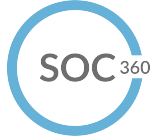Microsoft Azure offers a range of new features that help businesses stay coordinated and secure. It’s always being updated, and this helps refine tools consistently. There are three particular fronts to highlight today: StaffHub, information protection, and single sign-on.
Microsoft StaffHub
Microsoft StaffHub is a powerful app for “deskless workers.” These are workers who may not be bound to a location very often, and who do a great deal of their job on the move. Workers such as those in construction, manufacturing, or working in the service and retail industries are on their feet all day. They don’t often have a desk to sit at and iron out their schedule.
This is where Microsoft StaffHub comes in. Through the mobile app, workers see changes to their schedules and other notices as soon as you send them. Shifts can be re-arranged and discussed quickly. Workers who might otherwise have to come in to check new schedules can now do so a night earlier. If you need someone to fill in, you can have the conversation with all your workers rather than calling them one-by-one. It saves them time and stress, and it saves you time and stress.
Furthermore, workers can swap shifts easily. You can always lock a shift if you don’t want it swapped, but otherwise workers can easily use StaffHub to coordinate with each other without making managers the constant middleman. (You won’t realise how much time you spend coordinating for others until you take one of those tasks off your hands.) These swaps are always sent to a manager so that they can be approved, and workers get immediate notification whether you do or not – you can even send a note as to why.
You can also send and receive files quickly this way – new menus, a particular schedule, new company policies. This can functionally replace e-mail in a much more streamlined fashion for most tasks.
This is a superb new app for Microsoft Azure that can be utilised in a range of different ways. Even workers with desks can utilise its tools if they like its presentation and functionality.
Information Protection
This helps you classify sensitive data quickly with embedded permissions. Wherever the data is – even exterior to the company – if it’s part of your system, you can protect it quickly.
Microsoft Azure uses one of the most powerful Identity Rights Management systems operating today. It adapts broadly over multiple platforms and devices. A number of such software at other companies still can’t manage to do this across specific devices and operating systems. One nice thing about Microsoft is that their vast user-base makes them well-suited to creating an access management system with such broad range.
Yet Microsoft also made the end-user operability stand out. Managing accesses across so many employees and their devices would become complicated and headache-inducing very quickly if it wasn’t presented accessibly. This is an area that companies often forget. In addressing complicated problems, companies often present the solution in a complicated manner. This can lead to oversights and mistakes. Here, Microsoft continues in what’s been a revolution for them in their latest generation of business software. The ease of managing dozens or hundreds of accesses is remarkable.
Single Sign-On
Single sign-on (SSO) allows employees to work across a range of applications and websites with only one sign-on. Using one log-in allows an employee to reduce the amount of information an employee has to remember. Often, information overload can lead to having to write things down or record them elsewhere. This can lead to stolen passwords and authorisations.
SSO reduces help desk requests substantially – close to half – while removing a considerable stress from employees. SSO has to be well regulated, though, and here’s where Azure Active Directory makes it easy. It allows federated, password-based, or existing SSO approaches. In brief, these different approaches give different abilities to manage the sign-on to administrators and users while setting how the user gains access. It’s a safer way for employees to access information securely.
All in all, Microsoft Azure continues to be one of the most flexible tools for team coordination and identity rights management that’s out there.




